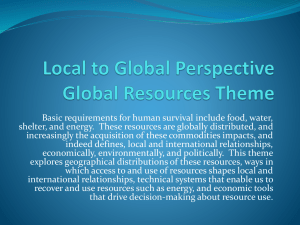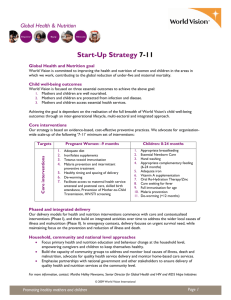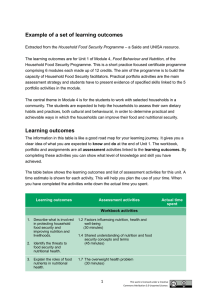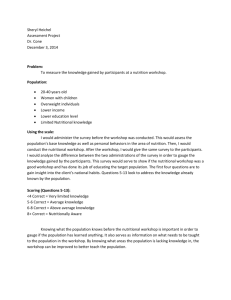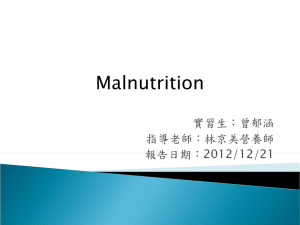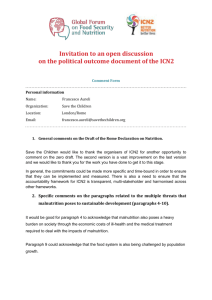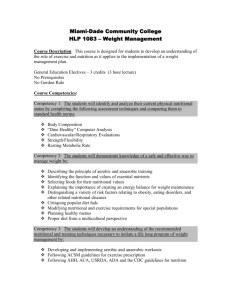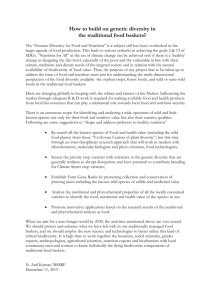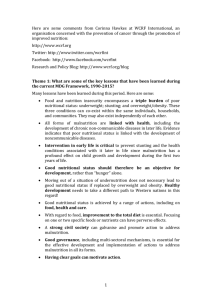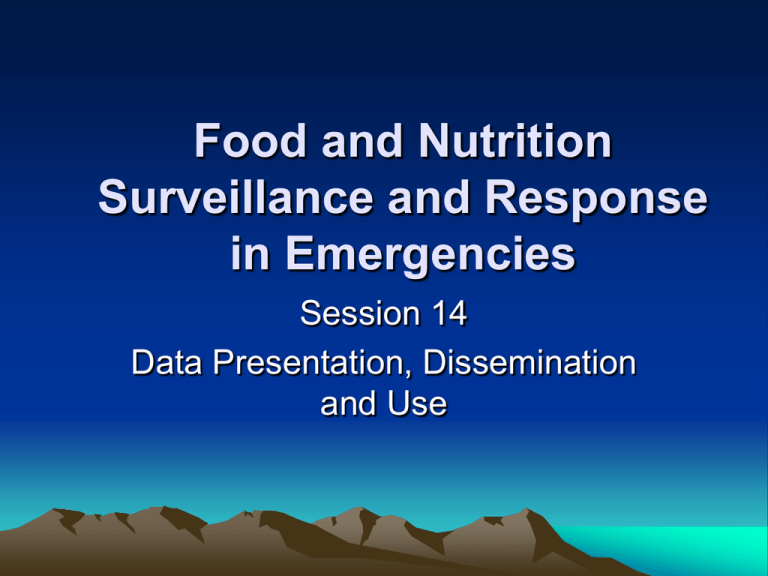
Food and Nutrition
Surveillance and Response
in Emergencies
Session 14
Data Presentation, Dissemination
and Use
SESSION OBJECTIVES
• Describe the survey report format and
dissemination of results
• Discuss the uses of nutrition
information
REPORTWRITING
The report should include the most relevant
information.
• Tables, Graphs, diagrams or map can save a
lot of text and is easier to understand.
• Title Page (Report title, date, organization)
• Table of contents: Section headings with page
numbers
• Acknowledgement: All those involved in the
survey, e.g. Communities, partners, team
members
1. Summary
• This should be a short version of the report and
should be written last to highlight on :
• area surveyed
• date of the survey
• objectives of the survey
• methodology used
• main anthropometric results, morbidity, food
security indicators, mortality etc
• explanation of causes of malnutrition in the area
• recommendations
2. Introduction
• context in which the survey was carried out
• population surveyed: population figures (total and <
5 years) ethnic group, livelihood of the population
• date of the survey
• which geographic area
• add a map
3. Objectives of the survey
The objectives are based on the questions the survey intends
to answer.
Example
• determine the nutritional status of children aged 659 months or 65-110 cm ht/length using weight for height.
• determine immunisation coverage of measles and polio
vaccination and vitamin A supplementation
• establish factors influencing child nutrition in relation to
care practices, food security, health and water situation
• estimate under five and crude mortality rates in the last 3
months prior to the survey
• provide recommendations for future interventions based on
the findings
4. Background Information
• general information (geographic character of the
area, socio-economic activities)
• food security overview
• health overview
• nutrition overview
• programmes/ interventions in the area
5. Methodology
Present a detail account of all the methods used
• Sampling methodology
• Survey subjects
• Sample size and parameters used
• Variables measured and recording information
• Measuring techniques
• Nutrition indices used
• Cut off points
• Composition of the teams
• Training of the survey teams
• Collection of qualitative data
6. Results
•
•
•
•
•
•
•
•
•
•
•
•
•
Household characteristics
Food and income sources
Water and sanitation
Disease prevalence
Distribution of the sample, according to age and sex
Mode of expression of the indices
Definition of grades of malnutrition
Distribution according to the indices, age and sex
Malnutrition rates with confidence interval
Risk factors in relation to malnutrition
CMR and mortality rates and cut offs
Possible causes of mortality
Qualitative info. on other factors e.g health,food
security,publichealth etc
8.Discussions
Discussions should be centered around Nutritional
status in relation to other variables
• Compare prevalence of acute malnutrition with
previous survey reports
• How do results compare with international
standards
• Income sources & coping strategies compared to a
normal year
• Current food situation compared to a normal year
and possible effect on the nutritional status
• Vaccination and Vit A coverage compared to international
standards
• What are caring practices is there a possibility of affecting the
nutritional status.
• Health care and its relationship with the nutritional status
• Any possible effects of morbidity on the nutritional status.
• Explain the current nutrition situation and factors influencing it
• How severe are the problems
• How are people coping
• Make predictions
• Based on findings provide recommendations
9. Recommendations
The recommendations are based on findings.
Depending on the situation, recommendations can
be divided into:
• Short-term interventions
• Medium to long term interventions
10. DISSEMINATION OF RESULTS
• Preliminary results should be shared with
partners at the community level:
– explain clearly the nutrition situation in the area and get
comments and views
– This provides an opening for more comprehensive and
longer term community based analysis of issues
– Make no promises.
– Share draft report with partners to get comments
• Make oral briefing to partners and donors at
various forums e.g. workshop or meetings.
– The briefing should be brief and clear outlining the
summary of the report.
– Allow enough time for discussion.
•
Disseminate final report to partners, donors,
academic and research institutions.

